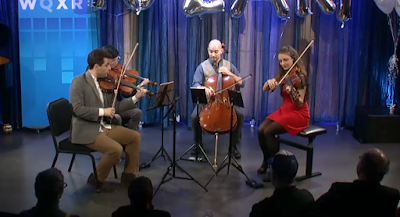Jennifer Koh details her zest for musical collaboration in the two-volume "Limitless"

Based on a recital project that the violinist Jennifer Koh completed last year, "Limitless" gathers her duo performances with eight contemporary composers ( Cedille Records ). The result is both a tribute to a virtuoso's magnanimity and to the inexhaustible expressive possibilities of the solo violin. The two CDs cover immense territory of artistic perspectives and partnerships in sound. Koh has long had notable breadth in her repertoire, much of it generated from commissions and specialized projects. Growing up in a Korean-American family accustomed to poverty and mistreatment, the violinist in "Limitless" draws explicit acknowledgments from several of the composers of her resilience and the artistic value of surmounting prejudice and marginalization. In that vein, the most challenging piece for me was "Give Me Back My Fingerprints," a closely interwoven duo with vocalist Du Yun that features the composer's raw voice, plaintive and deliberatel...






